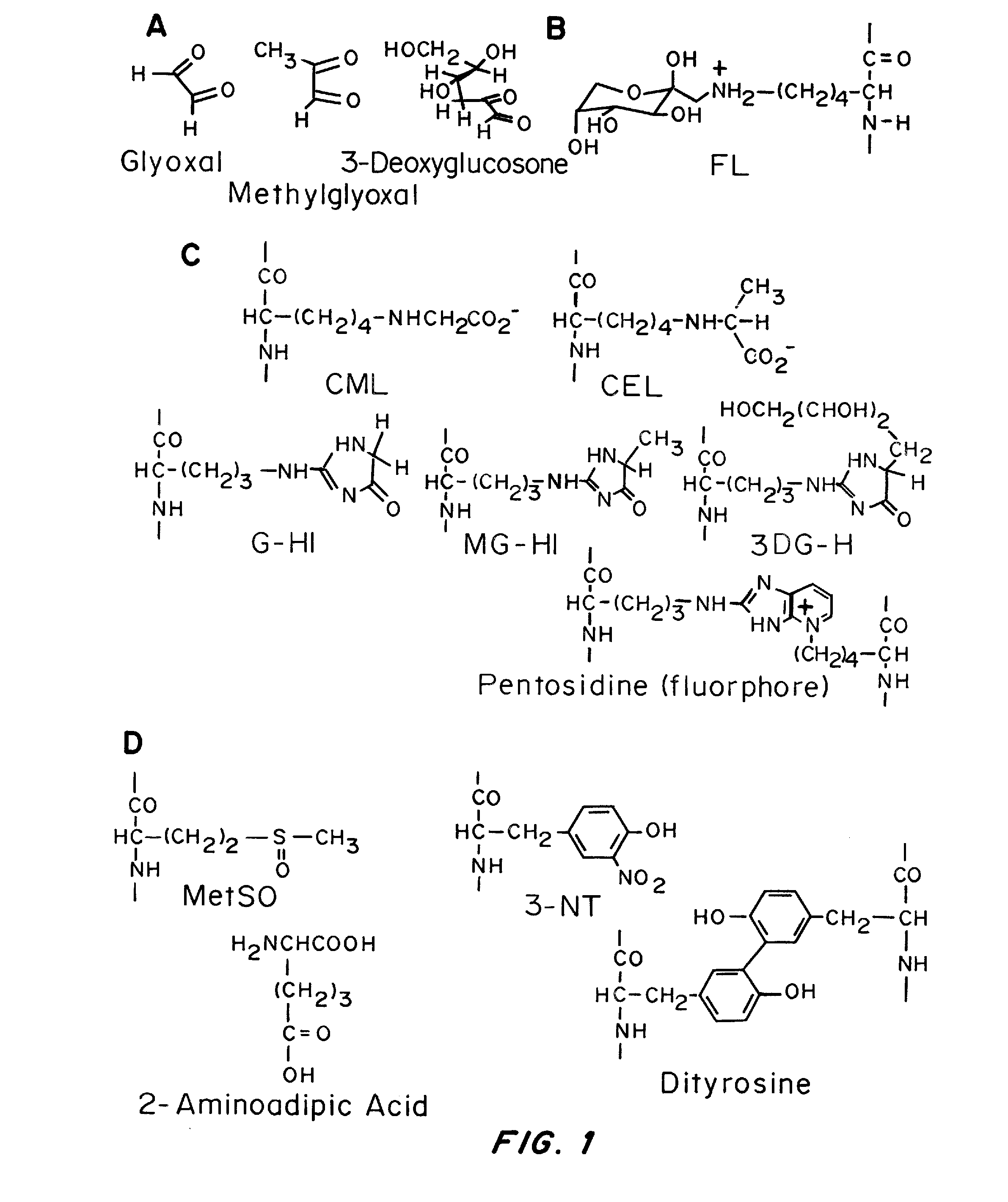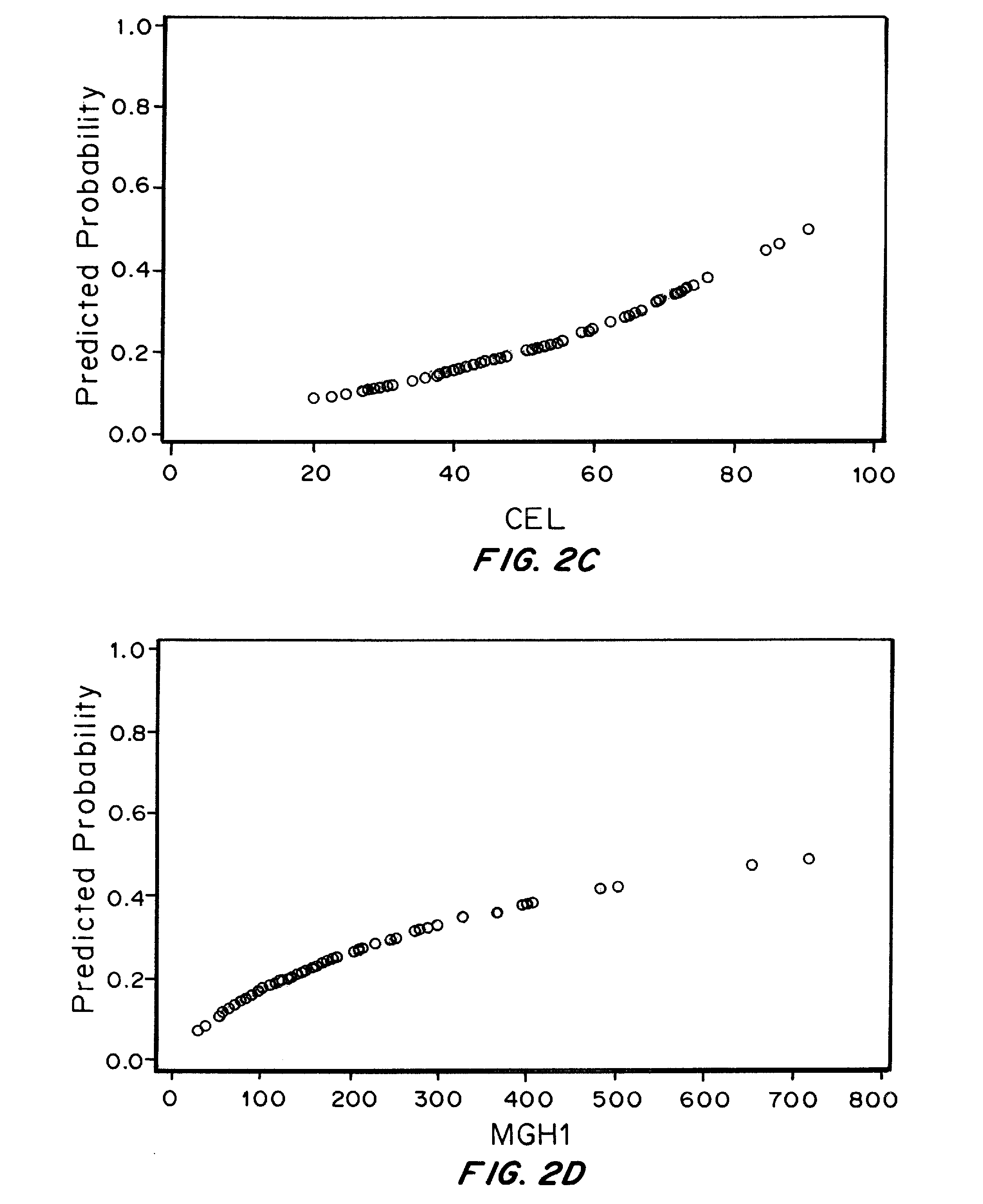Methods for Improving Diabetes Management
a diabetes management and diabetes technology, applied in the field of diabetes management improvement methods, can solve the problems of increasing the morbidity and cost of diabetes management, increasing the risk of kidney failure, and non-traumatic lower limb amputation, and achieve the effect of reducing the severity of kidney and eye damag
- Summary
- Abstract
- Description
- Claims
- Application Information
AI Technical Summary
Benefits of technology
Problems solved by technology
Method used
Image
Examples
example 1
The Relationship between Plasma levels of AGEs and OPs and Nephropathy Progression / Non-Progression
[0075]Materials and Methods
[0076]HPLC—Agilent 1200 Series Binary Pump, Autosampler, Degasser and Thermostatted Column Chamber; QQQ- Agilent 6410.
Materials:
[0077]MS grade water and methanol are from Honeywell. Heptafluorobutyric acid (HFBA) LC grade, Fisher, (Pierce Chemical) # PI-53104[0078]HPLC Column—Gemini-NX 3u C18, 4.6mm×250 mm Phenomenex #00G-4453-E0.
[0079]Since the analysis of 9 proposed biomarkers by LC-MS / MS is done on a single run, and requires the addition of heavy isotope internal standards for accurate quantification, the required light and heavy standards for nine biomarkers were obtained as follows: Light and heavy (N15) 3DG-HI was obtained from Organix in Essex UK. Heavy MG-HI and G-HI, was produced by NeoMPS in France. Methionine sulfoxide and dityrosine were synthesized, and light and heavy standards of the remaining 5 biomarkers (Pentosidine, CEL, CML,...
PUM
| Property | Measurement | Unit |
|---|---|---|
| pressure | aaaaa | aaaaa |
| Liquid Chromatography | aaaaa | aaaaa |
| Triple Quadrupole Mass Spectroscopy | aaaaa | aaaaa |
Abstract
Description
Claims
Application Information
 Login to View More
Login to View More - R&D
- Intellectual Property
- Life Sciences
- Materials
- Tech Scout
- Unparalleled Data Quality
- Higher Quality Content
- 60% Fewer Hallucinations
Browse by: Latest US Patents, China's latest patents, Technical Efficacy Thesaurus, Application Domain, Technology Topic, Popular Technical Reports.
© 2025 PatSnap. All rights reserved.Legal|Privacy policy|Modern Slavery Act Transparency Statement|Sitemap|About US| Contact US: help@patsnap.com



